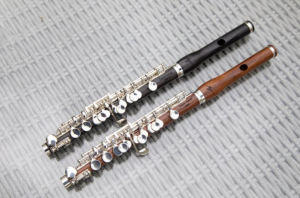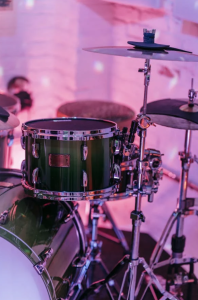Is it possible to talk about classical music without the mention of orchestral strings? Well, it’s not! Orchestral strings are the soul of this music genre and produce beautiful music in other genres. Be it violins or cellos, these instruments have been charming the audience for many years.
In this blog, we will discuss the musical world of orchestral strings. We will know the characteristics of orchestral strings and many other aspects. Join us on this musical ride!
What is Orchestra?
An orchestra is a large group of musicians who play different instruments, like string, woodwinds, brass, and percussion. These musical instruments typically include violins, violas, cellos, double bass, flutes, bass flutes, trumpets, xylophones, and many others.
Orchestras are known for composing various music genres from classical to jazz. Music directors lead them. All the musicians lead orchestras to create beautiful and rich-sounding music to showcase the uniqueness of every instrument.
Fun Fact: The word “Orchestra” is derived from the Greek word “Orcheisthai”, meaning to dance.
Symphony of Orchestra
In easy terms, a symphony orchestra means a musical composition played by the orchestra. It consists of several instruments creating a dynamic sound. There are mainly four main types of symphony orchestra – strings, woodwinds, brass, and percussion. Let’s discuss them.
Strings

The string instruments are a crucial part of an orchestra. These instruments include violins, violas, cellos, and double bass. All these instruments produce rich and warm music. The violins and violas make melodious music, while the cellos and double bass produce harmony.
The number of string instruments in every orchestra is as follows:
30-40 violins
10-14 violas
8-12 cellos
6-10 double bass
Woodwinds

The woodwind instruments in the orchestra are usually made of metal or wood. They produce a mellow sound. These instruments include flutes, oboes, bassoons, and clarinets. The flutes and oboes make melody, while clarinets and bassoons provide harmony.
The number of woodwind instruments is as follows:
2-4 flutes
2-4 oboes
2-4 clarinets
2-4 bassoons
Brass

The brass instruments produce a powerful sound. Also, they give volume to the orchestra. The musicians playing brass instruments are at the back of the orchestra. These instruments include trombones, french horns, trumpets, and tuba.
The number of brass instruments is as follows:
4-6 French horns
2-4 trumpets
3 trombones
1 tuba
Percussion

These instruments produce a rhythm for the entire orchestra. These instruments include drums, bells, cymbals, timpani, xylophones, triangles, etc.
The number of percussion instruments is as follows:
1 timpani
The number of other instruments depends on the orchestra and the music genre.
Did you know? The musicians playing triangles are known as “Percussionists.”
What are Orchestral Strings?
Orchestral strings are a set of strings that are commonly used in orchestras. These strings make a soft and warm sound to please the audience. The main orchestral strings are violin, viola, double bass, and cello. We will learn about them in detail in the later section of the blog.
Characteristics of Orchestra Strings
Orchestral strings have some unique traits that help them to produce beautiful music. Let’s discuss some of them.
Music Without Break
Orchestral strings can play the music for a continuous period. This is because they use the bowed technique to play the music without any pauses. The unbroken sound will enhance the depth and fluency of the music, making it more enjoyable.
Capable of Playing Any Note
Orchestral string instruments have no keys, hence they can produce any notes. The musician uses his fingers to play the music. This allows the musician to shift between pitches easily, offering versatility in music.
Can Play Many Notes at a Time
The musician can play two or three strings at once producing various notes simultaneously. An experienced musician can easily pull off such notes and captivate the audience with melodious music.
Variation of Tones
The placement of strings can produce variations of tones. These strings have a great impact on the music that’s produced. The warmer tones produce a low range and the brighter tone articulates a higher range.
Conclusion
To conclude, orchestral strings play a crucial role in the orchestra. Understanding the features of orchestral strings helps the musician to use these strings in a better way. Other than that, It’s important to know orchestral instruments to match your best interest. Also, it’s crucial to learn how to care for your orchestral strings and instruments. We hope you are ready now to buy the right orchestral strings.


